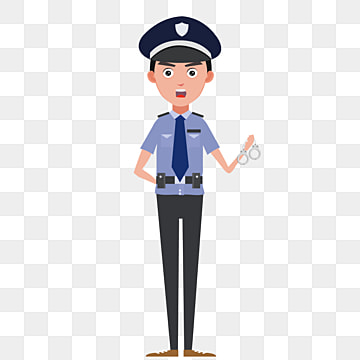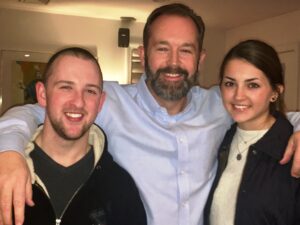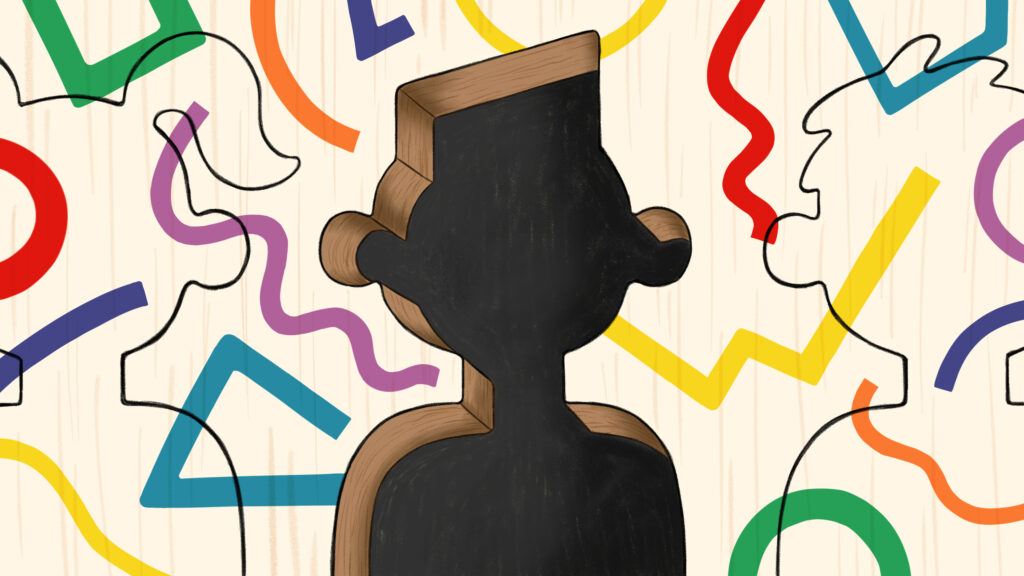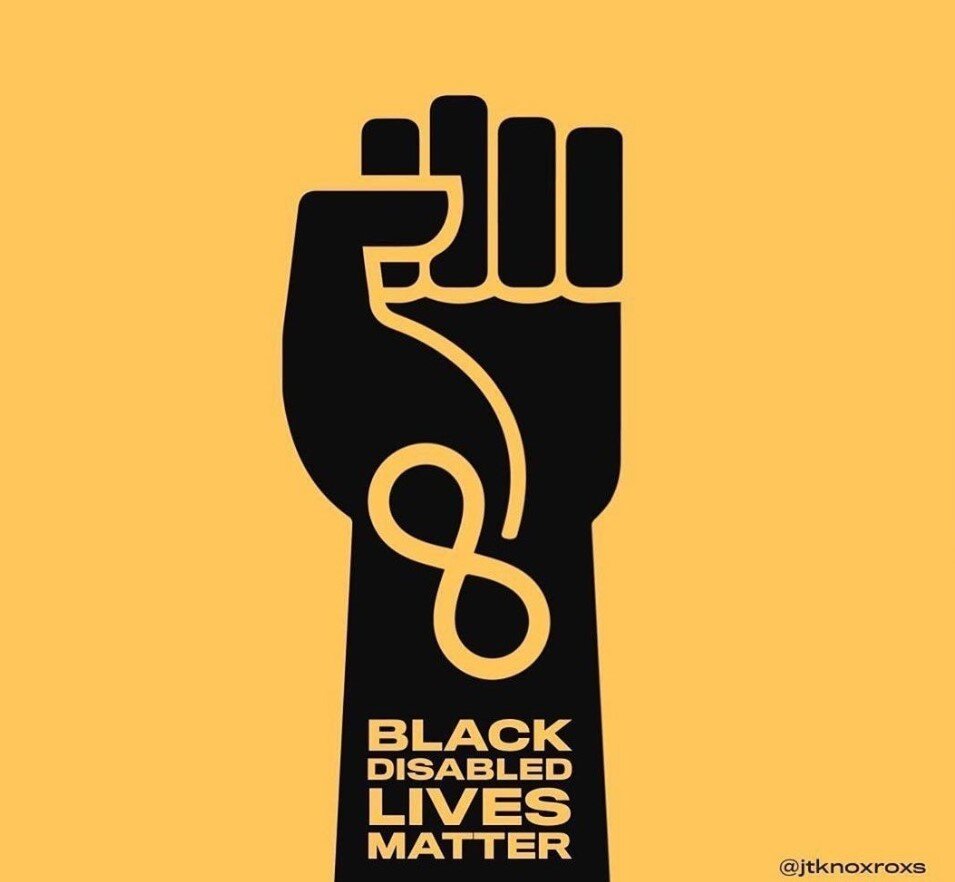
Who am I and why do I care?

I am creating this platform to help educate society on the deep rooted disparities embedded within our legal system in which unjustly target black autistic identities. While I do not personally identify as a member of the black or autistic community, I have studied these issues and am very passionate about educating society on their misconceptions and this intersectionality. Furthermore, I have a sibling who portrays many traits that fit into the diagnostic criteria for ASD, but who has yet to be diagnosed as he is not ready to explore this possibility at this moment in his life. However, education and conversations surrounding autism are something I am very passionate about and love sharing my findings and knowledge with my family and friends.
I chose to analyze the relationship between our legal system and this intersectionality as I am an American Studies major who has spent a lot of time studying our social, political, and legal systems and how they are unequally constructed and inadequately affect minority identities. I wanted to further my knowledge on how this intersectionality of two oppressed identities are therefore marginalized by our legal system which is intended to protect them. I used social media representations, newspaper articles, and scholarly readings in order to conceptualize a personal, representational, and educational perspective on this complex topic. When choosing my social media posts I wanted to find three representations that offered different perspectives and information in order to grasp a more well rounded understanding of these disparities and how they affect different persons in different ways.
Where do we start?
The intersectionality of race and disability constructs a dehumanizing world for these individuals due to societal ideals of white normalcy and associated stereotypes attached to each identity. Autism Spectrum Disorder is a mental condition that commonly gets misunderstood by abled society due to their lack of education and tendency to generalize autism as one specific embodiment. However, it is a spectrum in which each neuro-divergent individual possesses their own unique autistic personhood. Their personhood describes their autistic tendencies and how they work together to construct their vision and methods of understanding and interacting with the world around them. However, because our society has constructed the notion of disability as a negative or limiting label, autism gets viewed as a hindering aspect of one’s identity. Furthermore, the social and political construction of race, and more specifically blackness, and its dehumanizing treatment within society has generated many disparities for this intersectional identity. Social oppression and marginalization of both race and disability causes these individuals to be ostracized from society in dehumanizing ways. Additionally, it has forced black disabled individuals into habits of passing as white and abled and treatment with the goal of achieving ideals of white normalcy. It has also caused many individuals in the black community to ignore or avoid diagnosis and acceptance of their full identity as a method to limit marginalization. These disparities have been ingrained within our social, political and legal systems and have created a world that is not only socially unaccepting of diversity and divergence, but also physically constructed to further target and dehumanize those individuals who fall outside the desired norms.
Policing within the United States has become one of the most controversial discussions within our society’s current climate due to marginalization and inconsistencies regarding race, ability, gender, class, and sexuality. Our legal and political systems have evolved into structures that unjustly target specific identities in order to uphold power hierarchies and preserve societal ideals of normalcy. This has resulted in our legal system becoming authoritative figures who are uneducated, insensitive, and irrational when it comes to individuals who appear as undesirable or non-normative. Analyzing the treatment and views regarding intersectional identities of Black and Autistic individuals and how they are treated within our legal system, conceptualizes our authorities’ deeply held stereotypes and deceitful ambitions. While police are intended to maintain public order, ensure safety, and enforce the law for all, it is clear that there are deeper rooted intentions within our legal tactics. By exploring these issues we can begin to educate our society on these inconsistencies and work towards creating a system of power that protects all individuals and identities equally. Through the examination of social media representations, news articles, and scholarly work regarding these issues, we can see the dehumanizing effects this intersectionality faces due to the embodiment and label of two oppressed identities. They are placed at an immediate disadvantage due to societal stigmas and aesthetics for normative bodies which generate a world that is not only difficult for these individuals to navigate, but it also diminishes their appreciation for their own identity and causes further issues regarding treatment, access, and opportunity.

Question to consider:
- Why do black autistic individuals experience increased interactions with police?
- Why does this intersectionality experience more police violence?
- What are the stereotypes our legal system holds regarding this intersectionality?
- Why does our legal system fail to improve these disparities?
- How can we improve equality within our legal system?
Social media takes a stand:
@crutches_and_spice TikTok Post:
Imani Barbarin, the creator of this post, identifies as a black physically disabled woman and has become a prominent social influencer for black disabled identities. Her goal is to perpetuate change by further educating abled and often white society on the dehumanizing effects they generate for this intersecting identity. Within this post her body language and tone of voice indicate her frustration with these continuous disparities as she rests her head on her hand and uses no enthusiastic or incising diction.
Her post informs us about police brutality towards disabled bodies, insufficient media representations, unclaimed disabilities within the black community, our nations history regarding this intersectionality, and other dehumanizing effects black disabled identities face from abled white society. Imani discusses how disabled individuals experience significantly more violence and death from police. Furthermore, black disabled individuals are targeted even more due to predisposed stereotypes and our nations history of race science and eugenics which portray blackness as a disability. This construction of blackness as a disability not only further marginalizes this intersectional identity, but it causes individuals in the black community to reject or avoid diagnosis as they then become vulnerable to further marginalization. With this intersectionality being highly criticized and judged by abled and white society it projects the notion that not only their identity is not worth claiming, but their lives are not worth living. Imani connects the projection of vulnerability from exploitation by society and the media as well as the fear of death for individuals with “underlying conditions” during COVID to the underlying conditions involved when identifying as both black and disabled.
Imani’s post is very informative and powerful. Her messages can be advantageous for all of society as it supports black and disables communities while also a way of informing abled and white society about the dehumanizing effects of their actions and beliefs.
“Because they’re black, a lot of people don’t claim their disabilities in the black community. Why? Because of a history of race science, eugenics has sought to “diagnose” blackness and treat blackness as a disability in order to eradicate the things that make us special as black people.”
-Imani Barbarin
@2_funny Instagram Post:
This image was posted by the mother of an autistic child. The visual design and construction of this post is simple, despite its message being powerful. The choice of coloration coincides with the messages they are projecting as they are fighting for black equality. They also use a bold font to further highlight their overall message and make it easy for viewers to understand their position. The decision to exclude excessive coloration and distractions further explains the severity of their message while also being considerate of possible sensory overload for autistic individuals. This tactic is also common when the creator does not want to distract its viewers from the core information they are projecting.
This Instagram post provides important information for exploring the disparities within policing tactics towards black autistic individuals. It outlines the strength it takes for black autistic individuals to not only be confident expressing their autistic personhoods despite able bodied criticism, but also addresses the disparities and danger abled society places them in due to these non normative characteristics or habits.
This post is important for understanding how abled and privileged society misinterpret common autistic qualities or behaviors. It explains how qualities like sensory sensitivity, body language and reactions, or social tendencies tend to be misinterpreted by police and abled society which therefore places autistic black individuals in greater danger for police brutality and criticism.
The audience for this post can be versatile as it reassures, encourages, and empowers black autistic identities, while also educating abled and often white society on how they falsely rationalize these specific autistic qualities and define them as unusual or suspicious. This post could also be beneficial for police officers of all races as it explains how they commonly misinterpret black autistic bodies and behaviors as noncompliant and therefore react with violence which only results in increased danger and paranoia for these individuals.
@jean0872 Instagram Post:
This Instagram GIF has playful undertones despite it addressing a serious real world example of police brutality involving both black and autistic identities. This image consists of simple coloration with specific words highlighted in red to project their significance. It also includes an image of Kermit the frog drinking morning tea as if he is pondering over the irrationality of the words and story included.
Despite this post covering a specific incident regarding a police shooting of a black social worker who was helping his autistic patient who wondered from their group home (more information regarding this story can be found below in the interactive map), it also speaks to larger issues regarding our legal system. This situation involved policing tactics towards the intersectional identity of both a black and disabled man. Therefore, we can articulate how these identities face oppressive treatment from our legal system due to their ignorance and insensitivity for non-normative bodies. With no projection of danger, threat, violence, or disobedience insufficient action and response was still
Learn More From Scholars:
How racial stereotypes impact policing:
While this cartoon posted on Instagram by @the_other_m.j in 2018 is a cartoon it provides important information regarding the stereotypes attached to black bodies. The image visualizes the notion of “white vision glasses” perceiving the black community as violent, criminal, and often substance abusers. In reality, the black man in the image is drinking a soda, holding his phone, and wearing a backpack. However, through the lens of whiteness the man is drinking a Colt 45, holding a gun, and has a sack with weed and crack inside of it.
White society holds oppressive stereotypes regarding the black body which degrades their personal value, pride, opportunity, and reputation. These notions have become engrained within the eyes of law enforcement as well as there is increased police surveillance in black communities, higher arrest, conviction, and incarceration rates among black identities, and more instances of police stop and frisk and police violence against black bodies. Police view black individuals as more suspicious and more capable of crime compared to whites. This perpetuates a system of marginalization among the black community as our legal system has engrained these dehumanizing perspectives into their practices. This also further divides our society as it tarnishes the relationships and generates a sense of fear between authorities and the community they are supposed to protect. This impacts their daily life as the increased chance for criminal records effects access to opportunities, but it also leaves the black community in an environment of isolation as they fear the system that is supposed to protect them. Not only does this reject their basic rights as citizens, but it forces them to implement their own protective tactics and build smaller communities of alliance disconnected from white society.
These disparities regarding the black body are then only intensified when one also identifies as disabled. Embodying a double negative identity further marginalizes them by white abled society and increases their fears regarding our legal system due to disability holding its own negative stereotypes. This is why many individuals within the black community do not claim their disabilities.
“Aesthetics of Disability”:
This article by Jasmine Harris highlights the failure of disability rights laws changing public views regarding individuals with disabilities. Harris uses the term, “aesthetics of disability,” to describe the, “visible sensory and behavioral markers that trigger particular aesthetic and affective judgments about marked individuals.” She uses this aesthetic approach at the intersection of race and disability to explain the disparities these individuals face from abed society as well as law enforcement due to their inability to adhere to the desired societal norms and ideals. Harris outlines three behavioral responses to non-normative bodies that have become engrained within our policy goals. Isolation and exclusion can be seen through segregation, treatment with the goal of achieving established norms within our health care system, and eugenics has worked to eliminate differences.
Harris provides examples of police brutality against disabled bodies and explains why these interactions are often escalated and misinterpreted by authorities. Our policing system relies on perception where they use appearance to manage public safety, determine responses, and evaluate their use of force. This perpetuates a system where non-normative behaviors are viewed as more suspicious which results in increased violence and unethical treatment towards disabled bodies. Therefore, it is the aesthetic norms, rather than specific legal regulations, that regulate and determine our social control. Therefore, autistic tendencies and black bodies are often viewed as non-normative and suspicious which cause them to be prime targets for our appearance focused, white abled desired legal system.
Misinterpreting Autistic Personhoods:
OpenDoorsTherapy is an online platform offering a variety of therapy options and advice regarding ASD. Within this reading they emphasize and explain the complexity of police interactions with individuals on the spectrum.
Stereotypes vs. reality:
Neuro-typical individuals perceive ASD people as being cold and lacking emotion. However, they are actually very emotional as they tend to empathize so deeply that they become overwhelmed by the sense of suffering for others and personally.
Many ASD individuals are seen as noncompliant in situations requiring specific action, but this is simply due to them feeling overwhelmed or stressed by the situation. ASD individuals are typically driven by a sense of fairness and justice and actually prefer to have rules as it provides more structure for them. They appreciate the safety and predictability that rules generate and therefore are typically very law-abiding.
Statistics:
- 2017 study found that about 20% of youth with autism had been stopped and questioned by police by the age of 21 and close to 5% had been arrested
- 2019 study found that 75% of adults with autism had at least one police interaction in their life
- 53% of the adults reported four or more interactions
- Suggests there is an increased chance of police encounters for ASD individuals.
ASD individuals fear police interactions:
- Fear they will be overwhelmed, belligerent, fidget, or verbally and physically non-responsive due to nervousness.
- They often experience years of physical and emotional abuse, so being confronted by authoritative and aggressive behaviors can be triggering.
- ASD individuals have sensory sensitivity, so sirens, loud voices, megaphones, and bright flashing lights can be overwhelming which can be misinterpreted and result in police violence.
- ASD individuals can have trouble advocating for themselves, especially in stressful situations, so they sometimes tend to carry a card in their pocket describing their autism. However, the gesture of reaching in their pocket can easily be misinterpreted as them reaching for a weapon and result in the officer taking lethal action.
- Their tendency to avoid eye contact can portray a sense of guilt or that they are hiding something.
- They often have trouble processing social cues, so their lack of response to gestures or sarcasm used by police can be seen as noncompliant.
Explore Incidents of Police Brutality in the US:
It is important to note that there are far less cases of police violence against females within the black and autistic community, or at least they are not sufficiently represented within the media.
Conceptualize:
By understanding the disparities placed on black autistic bodies as well as the lack of education, insensitivity, and explicit targeting within our legal system, we can begin to conceptualize why the intersectionality of race and disability further dehumanizes this community. We can also begin to rationalize black autistics’ motivation for engaging in intense treatment and rehabilitation programs, why they strive to “pass” as abled and white, and why they tend to avoid diagnosis. Their desire to “cure” or learn how to “normalize” their autistic tendencies and conform to white ideals is a result of society’s marginalization of bodies that do not fit within the white abled idealization. Their efforts to pass, abandon, or suppress their neuro-typical behaviors or culture is a result of societal exclusion from opportunities as well as the lack of appreciation for different cultural values. The dehumanizing sensations of a double negative identity are responsible for why the black community avoids diagnosis. Not to mention the notion of whiteness that has surrounded autism within our nation’s history as it had been stereotyped as a white middle to upper class condition causing many black patients to be misdiagnosed or undiagnosed and therefore experience a sense of disconnect with the world. Furthermore, white abled society’s conceptualization of blackness as a disability works to strengthen, combine, and intensify these methods of oppression.
It is crucial to understand the consequences of these disparities within our society and legal system as they are implemented in order to uphold power hierarchies that displace minority identities. The lack of education regarding autism, and all mental conditions, within our policing system has not only further marginalized this intersectionality, but it has caused unnecessary interactions and violence. By implementing mental health professionals or education systems within our police training procedures we can begin to decrease these redundant cases of escalation while also allowing black autistic individuals to live a life where they feel protected rather than misunderstood and targeted by our legal system. Instances of police interaction are highly stressful, overwhelming, and unpredictable for all, but when one embodies an identity that is viewed as more violent, dangerous, and criminal as well as having sensory sensitivity, difficulty assessing social signs, and discomfort with abrupt occurrences these situations target each aspect of their identity. This makes them very vulnerable in police interactions as well as violence. In addition, our conventional policing tactics of relying on observation and perception and therefore aesthetic norms to evaluate suspicion needs to be modified in order to construct a society that values diversity. Therefore, these practices as well as shifts within our perspectives and tactics should be ingrained within the system that is intended to uphold public order and enforce laws to ensure the safety for all. Lastly, we should begin to use the powerful presence of the Black Lives Matter movement to support the rights of equality for disabled identities as their progress can begin to perpetuate and empower these necessary changes.

Work cited:
- Barbarin, Imani. “@crutches_and_spice.” TickTok, 6 Oct. 2020.
- Tiffany. “@2_funny.” Instagram, 23 Aug. 2018, www.instagram.com/p/Bm31CAdHfCI/?igshid=1kvu2s3oeutc4.
- “@jean0872.” Instagram, 18 July 2016, www.instagram.com/p/BINvKyOjFV5/?igshid=yrw2kldjgp2x.
- James, Mauricio. “@the_other_m.j.” Instagram, 30 Mar. 2018, www.instagram.com/p/BgxodCEBrBQ/?igshid=x7dg2x37e1s3.
- Harris, Jasmine E. “The Aesthetics Od Disability.” Columbia Law Review, vol. 119, ser. 4, May 2019, pp. 895–972. JSTOR.
- Oswald, Tasha. “Autism and Police Interactions.” OpenDoorsTherapy, 14 July 2020, opendoorstherapy.com/reflections-on-the-black-lives-matter-movement-by-an-autism-therapist-part-2/.

